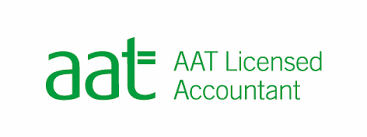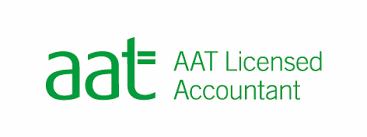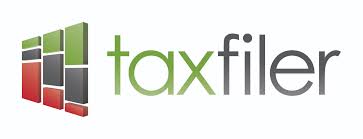Update
Making Tax Digital for Income Tax (MTD for ITSA)
Government’s plans to make it easier for individuals and businesses to get their tax right. Self-employed businesses and landlords will need to follow the rules for MTD for Income Tax from their accounting period starting on 6 April 2026 which is delayed by a further two years. (it was due to apply from the 6 April 2024). It was announced onn 19 December. It will introduce over few phases, the date dependent on the taxpayer’s income: From April 2026, self-employed individuals and landlords with an income of more than £50,000 will be require to follow MTD for ITSA. Those income of between £30,000 and up to £50,000 will be require to follow from April 2027. The Government will review the needs of smaller businesses and individuals those under the £30,000 before making any decision on the further mandation of MTD for ITSA. Its require Digital record keeping (Excel or Software) and the information required to submit quarterly update and end of period statement.
Budget 2024: update
All the key Budget changes announcements 2024: National insurance cut further by 2p in April – from 10% to 8%; High Income Child Benefit Charge threshold raised from £50,000 to £60,000. The charge is tapered so if you, or your partner, earn between £60,000 and £80,000; Introduction of British ISA, allowing extra £5,000 investments in UK; VAT registration threshold for businesses upped from £85,000 to £90,000; Reduction of higher capital gains tax rate on property from 28% to 24%. The Autumn mini budget 2023, Class 2 National Insurance for self-employed will be abolished. Minimum wages will be increased to £11.44 per hours over 21 years old from April 2024. Full expensing capital allowance for new plants and machinery for companies. R&D and RDEC relief will be combined from April 2024. From 6 April 2025, the current remittance basis regime will be replaced with a new residence-based test. The new regime will be available for up to 4 years starting from 6 April 2025, or the first tax year in which the individual becomes UK resident if later.This new regime will only be available to any individuals who have been non-UK resident for at least the previous 10 tax years, but qualifying individuals who have been tax resident in the UK for less than 4 tax years by 6 April 2025 will be able to use the Foreign Income and Gains rules (FIG regime) for any remainder of the 4 year term. After the initial 4 years, individuals will be taxed on their worldwide income and gains in accordance with the normal tax rules for UK residents. For those who currently hold non-dom status and move from the remittance basis to the arising basis on 6 April 2025, and do not qualify for the 4 year FIG regime, special rules will apply for 2025/26 so they will be taxed on 50% of their foreign income for that year. From 2026/27 foreign income will be taxed in the normal way. For 2025/26 and 2026/27 only, a reduced rate (of 12%) will apply to remittances of pre-6 April 2025 personal FIG. This does not apply to foreign income arising within offshore trust structures. From 6 April 2027, remittances of pre-6 April 2025 FIG will be taxed at the normal rates.
2021 Budget and mini-budget 2022: update
The mini-budget 22, only reversing National Insurance increase 1.25%, No Stamp duty on first £250,000 of property value and on first £425,000 for first-time buyer (and all other mini-budget measures and changes has been reversed). Also, Reduction in the Dividend Allowance from £2,000 to £1,000 from April 2023 and to £500 from April 2024. Reduction of CGT annual exemtion to £6,000 from April 2023 and to £3,000 from April 2024. In Spring Statement 2022, Increases the Employment Allowance from £4,000 to £5,000 from April 2022 . Will not increase PA, income tax and VAT rate. Corporation tax rate for small profit 19% (profit up to 50k) it will be trapper- profit 0ver £250K tax @25% and from 2023 CT rate @25%. Temporary extended trading loss c/b from one year to three years, it will help businesses for cash flows. You can deduct investment cost from tax bills by 130%. Super-deduction, an enhanced temporary 130% first-year allowance for main rate assets, and a 50% first-year allowance for special rate assets. SME R&D relief is capped £20,000 plus 3 X PAYE & NIC.
VAT Reverse Charge for Construction Industry
VAT reverse charges for building and construction services has been delayed to 1 March 2021 (it was due to apply from the 1st October 2020), in order to tackle fraud in the construction industry. The reverse charge will apply individuals or businesses registered for VAT in the UK , this mean the customer receiving the service will now liable to account for VAT and have to pay the VAT due to HMRC instead of paying the supplier. The VAT cash amount will no longer flow between businesses and will have to be registered and need to mention on the invoice as a reverse charge apply. For more information about the VAT reverse charge, click here
Capital Gains Tax: Change in PPR and lettings relief
From the 6th April 2020, for the calculation of PPR the final 18 month exemption will be reduce to 9 months. Also deemed occupation at start of ownership to be limited to 24 months. Married couples/civil partners can only have one principal private residence (PPR ) Relief on one property. From April 2020 you can transfer only the principal private residence history to your spouse, not any other property.
This mean, it will increase the capital gain tax liabilities for anyone selling their main resident where apply PPR. Lettings Relief would be removed from 6 April 2020 onward. The proposed changes to lettings relief will potentially only be available to landlords who shared occupation of their main house with a tenant. Lettings relief can reduce capital gains tax due on the sale of a property as you can claim up to £40,000 individually or up to £80,000 if a partner or spouse jointly owns the property.
Capital Gains Tax: 60-Day Window for CGT return and payment
From 6 April 2020, anyone making a taxable gain from selling a UK residential property must submit a residential property capital gains return within the 30-day window from the date of completion and pay any CGT owed. From 27 October 2021, this deadline inrease for reporting capital gains tax on residential property disposals from 30 days to 60 days.
From April 2019 non-UK residents will be subject to UK tax on gains arising from direct or indirect disposals of all types of UK land and interests in UK property. But only gains in respect of appreciation in value after 6 April 2019 are subject to UK tax, there will be require a rebasing for tax purposes in the UK land on 5 April 2019. For the non-UK resident persons NRCGT apply since from 6 April 2015 any disposal of residential property in the UK. There will be require a rebasing of residential property on 5 April 2015.
UK property held by non-UK residents company
Changes from 6 April 2019, UK property gains released by non-UK resident companies are subject to corporation tax instead of CGT. Non-resident companies are no longer be required to complete NRCGT returns, as they are not required under Corporation Tax. The ATED-related capital gains tax is abolished. The normal Corporation Tax filing and quarterly payment rules apply. A Corporation Tax return will be required for that shortened accounting period. This mean, the disposal of a UK property will result in a one-day accounting period, as result a single stand-alone company will be considered very large for the corporation tax payment and CT will be payable 3 months and 14 days after the end of the one-day accounting period. However, by concession where there are 4 or more disposals, HMRC accept a 12 month accounting period.
Changes from 6 April 2020, Non-UK resident companies that carry on a UK property rental business or have other UK property income will be liable to corporation tax instead of income tax. For more information, click here
Capital Allowance
The 100% Enhanced Capital Allowances (ECAs) and first year tax credit for loss making companies for purchases of energy or water-saving plant and machinery will be abolished from April 2020. Temporary Annual Investment Allowance (AIA) increase to £1 million (previously £200,000), this time limit is 1 January 2019 – 1 January 2022 ( suppose to end 31 December 2020). The main pool capital allowance rate remains at 18% writing down allowance per year and capital allowance special rate allowance reduced from 8% to 6% per year from April 2019.
The structures and buildings allowance (SBA) is a new relief available on the construction of non-residential structures and buildings (land and dwellings will not be eligible for relief). The relief provides a flat rate 3% per year allowance based on the original building expenditure (previously 2%). The relief applies from when a building is first brought into use. There are no balancing allowances or balancing charges in relation to the SBA on a future disposal of the building.
Off-Payroll Working in the Private Sector
From April 2021 off-payroll working in the Private Sector in medium and large business (previously April 2020, it has been delayed by 12 month). Similarly to off-payroll in the public sector which start from 6 April 2017, any medium or large private sector businesses hiring contractors or freelancers will be responsible for determining the IR35 status of their workers. The ‘fee-payer’ (the client or agency) will be responsible for National Insurance and PAYE deducted at source from their income before paying the contractor their net salary.
Digital Services Tax (DST)
From 1 April 2020, a proposal for a completely new tax of 2% on the revenues of search engines, social media platforms and online marketplaces which derive value from UK users. The DST is a departure from most corporate taxes as it applies to revenues not profits. It would only apply where the annual revenues of the group exceeded £500m and more than £25m of that was in the UK. Only revenues earned from 1 April 2020 would be taxed and HM Treasury would have to review the operation of DST by 31 December 2025. The DST does not seek to tax digital sales more generally.
Corporation Tax loss relief: Restriction and Relaxation
Legislation will be introduced in Finance Bill 2019. From 1 April 2020, the loss restriction will have the effect that the amount of chargeable gains that can be relieved with carried-forward losses will be restricted to 50%.
From 1 April 2017, a restriction on the amount of brought forward losses which can be offset in any one year. The restriction should only impact the largest companies and groups, an annual deduction allowance enables up to £5m of profits per company or group to be offset by brought forward losses each year before any restriction. Beyond this, profits can only be relieved by up to 50% using brought forward losses. A requirement to specify the amount of the deduction allowance in the corporation tax return. Further requirements for groups to nominate a company to prepare and file a group allowance allocation statement.
From 1 April 2017, a relaxation allowing carried forward losses to be used more flexibly. Trade losses and Non-trading loan relationship deficits (NTLRDs) can be carried forward against total profits of the company, and not just profits of the same trade.
Making Tax Digital for VAT
From 1 April 2019, VAT registered traders with turnover in excess of the VAT registration limit (currently £85,000), will have to keep digital record and need to submit their VAT returns using Making Tax Digital compatible software which linked to HMRC’s Making Tax Digital (MTD) systems. VAT-registered businesses with a taxable turnover below £85,000 will be required to follow Making Tax digital rules for their first return starting on or after April 2022.
FRS102 and FRS105
FRS 102: The Financial Reporting Standard applicable in the UK and Republic of Ireland. FRS 102 is available for use by UK unlisted groups and listed or unlisted individual entities preparing financial statements that are intended to give a true and fair view. FRS 102 is designed to apply to the general purpose financial statements and financial reporting of entities including those that are not constituted as companies and those that are not profit-oriented. This FRS 102 is a single financial reporting standard replacing old UK GAAP. It is a fair value accounting which to give a true and fair view of the assets, liabilities, financial position and profit or loss of the entity for the reporting period.
FRS 102 issued 14 March 2013 and effective for periods beginning on or after 1 January 2015. After that some amendments and revised to FRS 102, most recent published is March 2018. most recent amendments May 2019 and December 2019 its effective from 1 January 2020.
The standard comprises 35 sections, each of which addresses a specific area of accounting, including details of fare value accounting, recognition, measurement, terminology, presentation, format, accounting policy and disclosures.
FRS 102-1A: This Section 1A for small entities which meets the size criteria for a small-entity if it does not exceed at least two of the following three thresholds in relation to a financial year: Turnover: £10.2m (adjusted for periods longer or shorter than 12 months) Balance sheet: £5.1m, and Average number of employees: 50. FRS102-1A reduce disclosure is effective for accounting periods beginning on or after 1 January 2016. Small entities must apply the recognition and measurement requirements of FRS102 in full but are subject to different presentation and disclosure requirements (usually 13 disclosure). However, the financial statements of a small entity must also include any extra disclosures if material and necessary for them to give a true and fair view of the assets, liabilities, financial position and profit or loss of the entity for the reporting period. Its not require to submit profit & loss, OCI, SOCIE , Cash flow and director report to company house. For more information about the FRS 102, click here
FRS 105: FRS 105 The Financial Reporting Standard applicable to the Micro-entities Regime is a new accounting standard applicable to the smallest entities. It published 16 July 2015. effective for accounting periods beginning on or after 1 January 2016. An entity meets the size criteria for a micro-entity if it does not exceed at least two of the following three thresholds in relation to a financial year: Turnover: £632,000 (adjusted for periods longer or shorter than 12 months) Balance sheet: £316,000, and Average number of employees: 10. After the first financial year of the entity, the criteria must be met in two consecutive years for an entity to qualify as a micro-entity and must be exceeded in two consecutive years to cease to qualify.
FRS 105 is a single accounting standard which based on FRS 102. The standard comprises 28 sections, each of which addresses a specific area of accounting, including details of recognition, measurement, terminology, presentation, format, accounting policy and disclosures. FRS 105 not require to revaluing or subsequently measuring assets or liabilities at fair value, apply historical cost, one line current assets and current liability on balance sheet, not require to submit profit & loss and director report to company house. Only disclosure require for any arrangements that are not reflected in its statement of financial position if it is material, average number of employee, advance & credit to director and financial commitment & guarantee as the foot note of Balance sheet. For more information about the FRS 105, click here .
Tax Tips
The Tax laws change every year so you need to review your personal situation regularly with tax adviser before make any decision and save tax wherever possible. These Tax Tips are designed to give you some general information only, which might be relevant to you or your business and is not intended to be advice to any specific person. This is just a ideas and guideline according to 2020 Budget.
1. Declare all income
Declare all source of income. Do not get involved in a tax avoidance scheme even if it sounds good and tax evasion i.e the non-declaration of income, capital gains or false information and must not deliberate & concealed. Majority of tax avoidance schemes are caught by anti-avoidance rules and tax evasion would be illegal.
2. Act on time, timing is everything for tax planning
Timing is very important for the tax planning. The tax planning need to be done in a tax year before the end of the tax year and act accordingly. Once the deadline passes, most of your planning options will close. Deadline was a line drawn by HMRC. There are lots of separate deadlines for UK tax purposes, in the UK this is 5th April. So it is important to considering your planning options for the current tax year before the year end i.e. 5 April.
For example: (1) If you or your partner’s became the highest earner in your family exceeding £50,000 for 2019-20. If so, any child benefit claimed in that year, you may have to pay child-benefit charges (2) If your income exceeding £100,000 for the year, you will start to lose your personal allowance. This loss of your personal allowance (£12,500 for 2019-20), this means that if your income earned between £100,000 and £125,000 then you will end-up paying tax at an effective rate of 60%.
Actions you could take before 5 April to reduce tax liabilities include: Consider personal pension contribution, gift aid donation, bringing forward capital expenditure, repay your employer for any private fuel, deferring bonuses until after 5 April, make tax free gift and utilise all available tax free allowance. If you need help for tax planning, please contact WeAccountants on 07852 758409.
3. Submit the correct tax return and pay tax on time
Every year, millions of people are missing their self-assessment deadline i.e. 31 January, they are faced with penalties and interest charges from HMRC. Also many people are facing fines because of their tax returns not being correct. So it is important to submit your tax returns by a qualified person, because sometimes lots of complex issues make tax returns filling more complicated. People who have filled their tax returns the same for many years without any issues, it does not mean they have been doing it correctly. HMRC has now increased random checking where tax payers have been getting it wrong, when filling their tax return. If anyone who awaits for HMRC to catch them, they have submitted their incorrect tax returns and have not paid tax on time, then they will face a higher penalty also an interest charge. Therefore tax returns must be filled correctly and pay tax on time.
4. Start your business with the right structure: Sole Trader vs. Limited Company
First of all, think about how you should start your business, because the structure of your business can have a significant impact on your tax bills. There are three available options, i.e. as a sole trader, partnership or limited company. Here I have mentioned some facts without going into details.
Sole Trader or Partnership: There is a legal issue which is unlimited liabilities on sole traders or partners. In term of tax, sole traders pay tax on all profit made by business whether or not he actually draws the profit. He will pay tax @20%, 40% & 45% plus NIC2 on flat rate and NIC4 @9% & 2% depending on individual marginal rate. There is not much opportunity for tax planning and not easy to transfer business to next generation. But sole trader has early year favourable loss relief opportunity, so if you make a loss or very low profit in an early year of a business, then it may be advisable to operate a sole trader or partnership.
Limited Company: Company has limited liabilities on shareholders or directors. In term of tax, companies currently pays corporation tax @19%, this rates will be increase from 2023, for small profit rate 19% (profit up to 50k) and main CT rate @25%. Shareholders or directors only pay tax when extracts profit from the company. If they did not withdraw the profit/dividend then there is no tax to pay. If they withdraw the profit as a dividend then no NIC to pay and dividend rate of tax @7.5%, 32.5% & 38.1%. Also limited companies has lots of opportunities for tax planning and profit extraction i.e., salary, dividend, other profit attraction’s and exit planning. It is easy to transfer businesses to the next generation than sole trader businesses. Transfer company’s shares over a number of years by using AE, so no CGT to pay. Please talk to us on 07852 758409 about the best option for your business structure.
5. Make payment to personal pension and gift aid donations –Details coming soon…….
6. Nominated principal residence (main home)
7. Transfer income producing assets to spouse or civil partner
8. Spreading the own company shares between you and your spouse or family member
9. Check your PAYE tax code
10. Let rooms in your own home
11. Pass on a let property to next generation
12. Employers’ pension contributions save NICs
13. Arrange for your company to buy your shares
14. Tax-efficient share scheme for employees
15. Tax- free benefit for employees
16. Transfer your company car into your own name and reduce your tax
17. Invest in a small trading company under EIS, SEIS & VCT
18. Gift early in life time rather then on death bed
19. Make a will and skip a generation
20. Don’t forget to party!
Details coming soon…….








